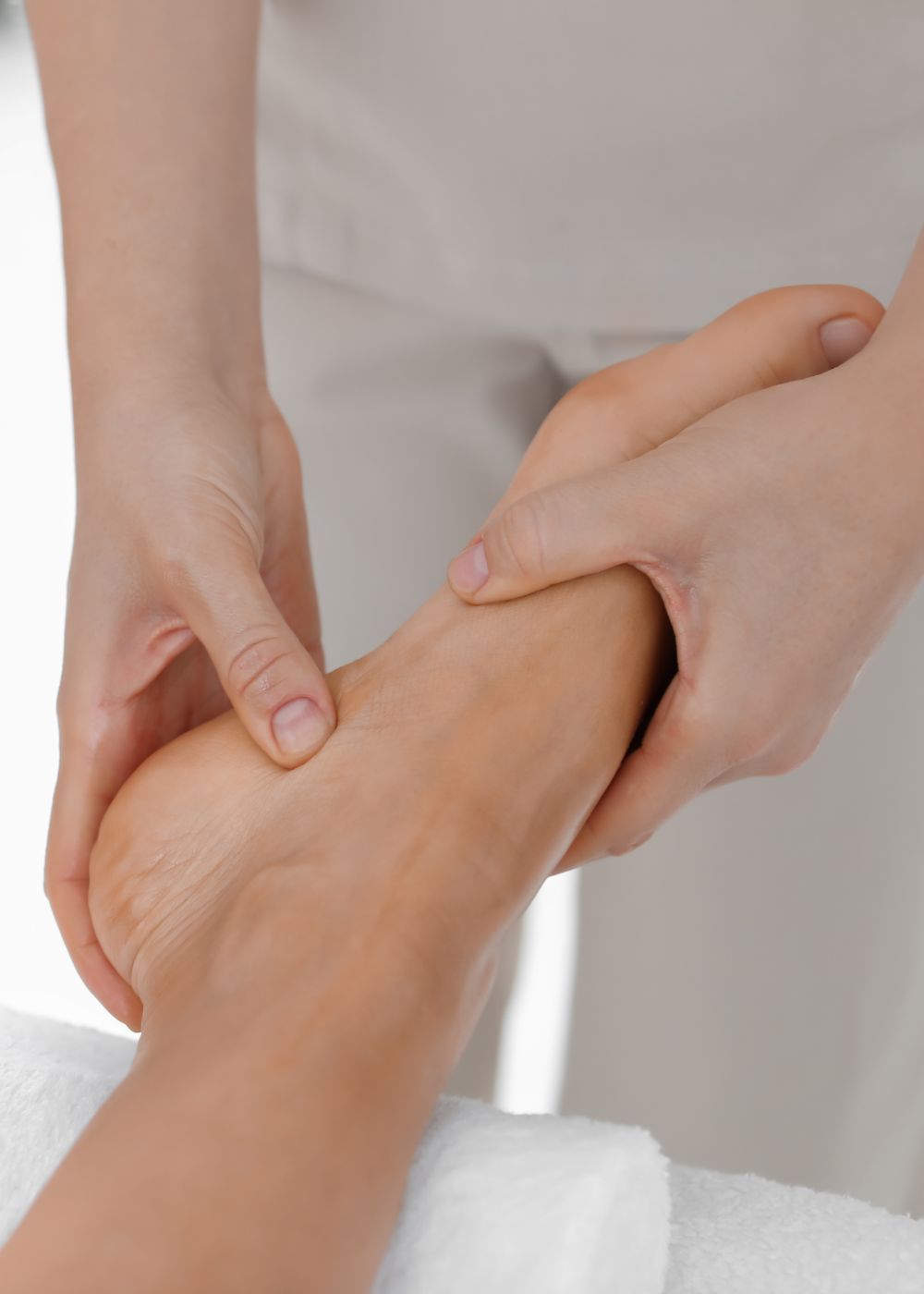Ganglion Cysts
Ganglion Cysts
Ganglion cysts are common masses that are frequently found in the foot and ankle. They are not cancerous and, in most cases, are harmless.
Ganglion Cysts

A ganglion is actually an offshoot from a joint, like a balloon on a stalk. It grows out of the tissues surrounding a joint, such as ligaments, tendon sheaths, and joint linings. Inside the “balloon” is synovial fluid; a thick, slippery fluid, similar to the fluid that lubricates our joints.
These fluid-filled cysts often appear suddenly and seemingly out of nowhere, and they can just as quickly disappear or change size. Many ganglion cysts do not require treatment. However, if the cyst is painful, interferes with function, or has an unacceptable appearance, there are several treatment options available.
Treatment of ganglion cysts can be broken down into two general categories: non-surgical and surgical treatment.
Nonsurgical Treatment
Initial treatment of a ganglion cyst should rarely ever be surgical.
Observation. Because a ganglion cyst is not cancerous and often disappears over time, if you do not have symptoms, we recommend giving it time and watching to make sure that no unusual changes occur.
Immobilization. Activity often causes the ganglion to increase in size and also increases pressure on nerves, causing pain. Sometimes an ankle brace or splint may relieve symptoms and cause the ganglion to decrease in size. As pain decreases, you can then undertake exercises to strengthen the ankle and foot and improve range of motion.
Aspiration. If the ganglion causes a great deal of pain or severely limits activities, the fluid may be drained from it. This procedure is called an aspiration. During a ganglion aspiration, the area around the ganglion cyst is numbed and the cyst is punctured with a needle so that the fluid can be withdrawn. Unfortunately, aspiration frequently fails to eliminate the ganglion because the “root” or connection to the joint or tendon sheath is not removed. A ganglion can be like a weed which will grow back if the root is not removed. In many cases, the ganglion cyst returns after an aspiration procedure. To try and decrease the chances of the ganglion recurring, we often recommend injecting cortisone into the cyst, once it’s been aspirated.
Why Choose
Chelsea Foot and Ankle?
To us, our patients and our team are family, and you can expect to be treated like the VIP you are.
We respect you and your time and are committed to improving your quality of life by offering comprehensive services at reasonable prices customized to meet your unique needs.
Watch this video to see Dr. Ciment aspirating and injecting a ganglion cyst
Surgical Treatment
Surgery may be recommend if your symptoms are not relieved by nonsurgical methods, or if the ganglion returns after aspiration. The surgical procedure to remove a ganglion cyst is called an excision.
Surgery involves removing the cyst as well as part of the involved joint capsule or tendon sheath, which is considered the root of the ganglion. However, even after excision, there is still a small chance the ganglion will return.
Excision is done as an outpatient procedure and out patients are able to go home same day after a brief period of observation in the recovery area. There may be some tenderness, discomfort, and swelling after surgery. While you are able to walk right out of surgery, we recommend keeping your walking and weight-bearing activities to the minimum necessary for 10-14 days. Normal activities usually may be resumed 2 to 4 weeks after surgery.
Are you interested in treating your ganglion cyst?
If you need relief from ganglion cyst, call our office today at (646) 929-4149! Don’t forget to check out our blog to learn more about us!
Our Patients Love Us
An absolutely amazing experience. Dr. Ciment is an absolutely wonderful person – it is very evident that he truly cares about his patients.
What a pleasure to meet Dr. Shastri. She was extremely personable, listened intently and actually was able to treat my condition to a fair extent in the first sitting.
Highly recommend her.
